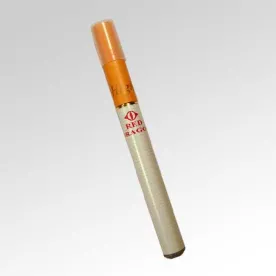Teens who vape have triple the amount of five different toxins in urine tests than teens who never vape. Pediatric researchers at University of California, San Francisco (UCSF), identified six toxins in the urine of vaping teens including benzene, ethylene oxide, acrylonitrile, acrolein, and acrylamide; some of which are known to cause cancer.
These toxins are called Volatile Organic Compounds, or VOCs. Acrylonitrile, a known carcinogen, shows in even higher concentrations with teens who use fruit-flavored liquids while vaping. The toxins appear in teens who use both nicotine, and non-nicotine liquids.
Contrary to the belief that e-cigarettes are safe, Dr. Mark Rubenstein, Professor of Pediatrics at UCSF, stated “Based on these results, if the teenagers kept using these products over the years, we believe it could be dangerous.”
Recent studies show that e-cigarettes are a gateway to smoking combustible cigarettes which are also known to deliver these toxins into the body. The study points out that the level of exposure to similar toxins in traditional cigarettes may be higher, but the physical dangers of vaping are still largely unknown. Recent studies suggest that new, previously unknown, dangers exist, and will continue to be revealed as more studies are completed.
As discussed in other posts, the flavorings used in e-cigarette liquids are generally approved by the FDA for use in food products that are ingested, not “inhaled.” According to Rubenstein, when the liquids are heated, the food additives change composition to form potentially dangerous chemical compounds—including these identified VOCs. Rubenstein stated he believes teens use vaping products because they believe they are safe—a fallacy contradicted by this study.
Spokespersons for the vaping industry disagree, of course, but mounting scientific evidence is far more compelling. Dr. Norman Edelman, senior scientific advisor to the American Lung Association joined Rubenstein in his belief that vaping is not a safe alternative to smoking, stating the only safe alternative is smoking cessation and, in the case of teens, smoking prevention.
If your teen is vaping, you should advise them of the dangers and get them into a smoking cessation program. Local hospitals and the American Lung Associationassist with programs to prevent use and to quit.



 />i
/>i
